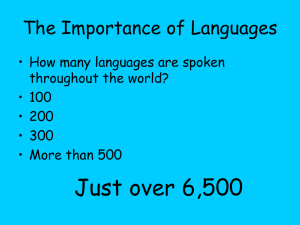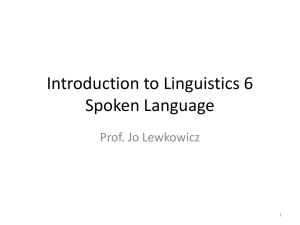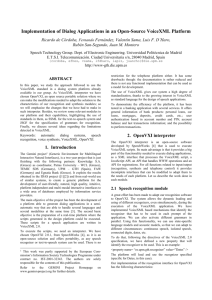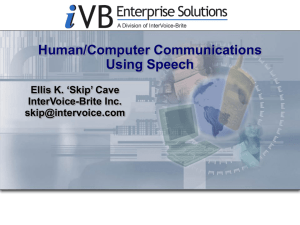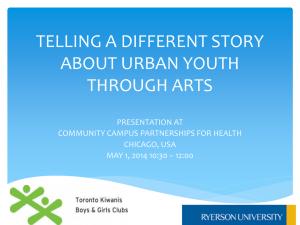Spoken Dialog Systems and
advertisement
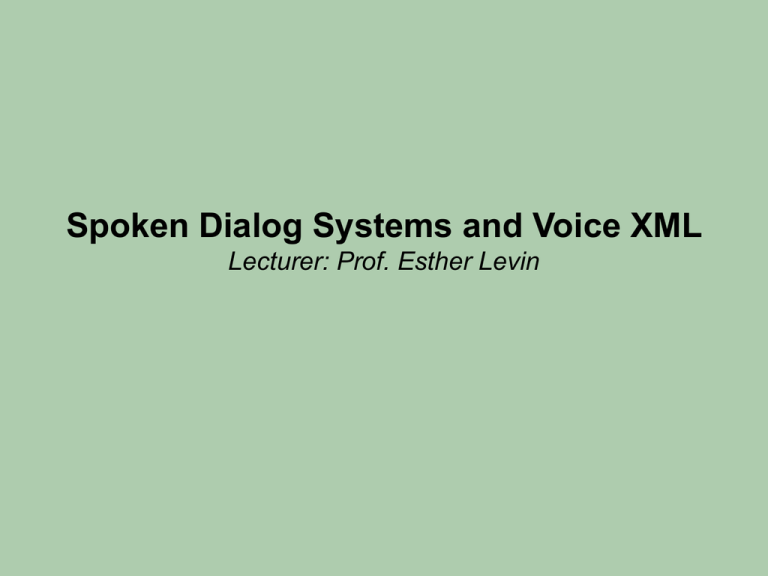
Spoken Dialog Systems and Voice XML Lecturer: Prof. Esther Levin Description Spoken dialogue systems enable users to interact with computer systems via natural and intelligent dialogues, as they would with human agents. Development of such systems requires a wide range of speech and language technologies, including automatic speech recognition (ASR), to convert audio signals of human speech into text strings, natural language and dialogue processing (NLP), to determine the meanings and intentions of the recognized utterances and to generate a cooperative response to them, and text-to-speech synthesis (TTS), to convert the system utterance into actual speech output. VoiceXML VoiceXML is the HTML of the voice web, the open standard markup language for voice applications. HTML assumes a graphical web browser with display, keyboard, and mouse, VoiceXML assumes a voice browser with audio output, audio input, and keypad input. Audio input is handled by the voice browser's speech recognizer. Audio output consists both of recordings and speech synthesized by the voice browser's text-to-speech system. VoiceXML takes advantage of several trends: The growth of the World-Wide Web and of its capabilities. Improvements in computer-based speech recognition and text-to-speech synthesis. The spread of the WWW beyond the desktop computer Project Scope We will be designing, developing, testing and deploying spoken dialog system for a variety of applications. Upon the successful completion of this project a student should be able to: understand the main functional components of a typical spoken language processing system; have a detailed knowledge of the basic elements of spoken language technology, such as patterns recognition, Hidden Markov Models, and speech recognition have practical experience of speech recognition technologies and of spoken dialogue system development using VoiceXML; appreciate current research issues in spoken language technology and be aware of its commercial applications Logistics In this project-based course, students are grouped into teams to work on projects involved with design, implementation and testing of spoken dialog systems. The capstone course will last two semesters. In the first semester, we will study key technologies involved in this multi-disciplinary field. The second semester will focus on implementation of exciting real-world dialog systems using the Voice XML platform. There will be two kinds of lectures: focus on technologies and theory (Pattern Recognition, Hidden Markov Models, Automated Speech Recognition, Spoken Dialog Systems, etc); focus on different aspects of VoiceXML For most of the semester we will alternate between the two kinds of lectures on a weekly basis. The course material will be entirely self-contained Requirements and Grading Fall 2006: There will be 5-8 assignments. Some of the assignments will be research to be presented in class. Attendance is mandatory. Passing grade from the ethics class is required to pass this course. Spring 2007: Group meeting Project evaluation Project report Text McTear, Michael, Spoken Dialogue Technology Towards the Conversational User Interface. Springer Verlag, 2004 Webpage http://www-cs.ccny.cuny.edu/~esther/capstone Visit before every lecture for the latest announcements What is Voice XML? VoiceXML Architecture Voice XML basics Speech Recognition Text-To-Speech


